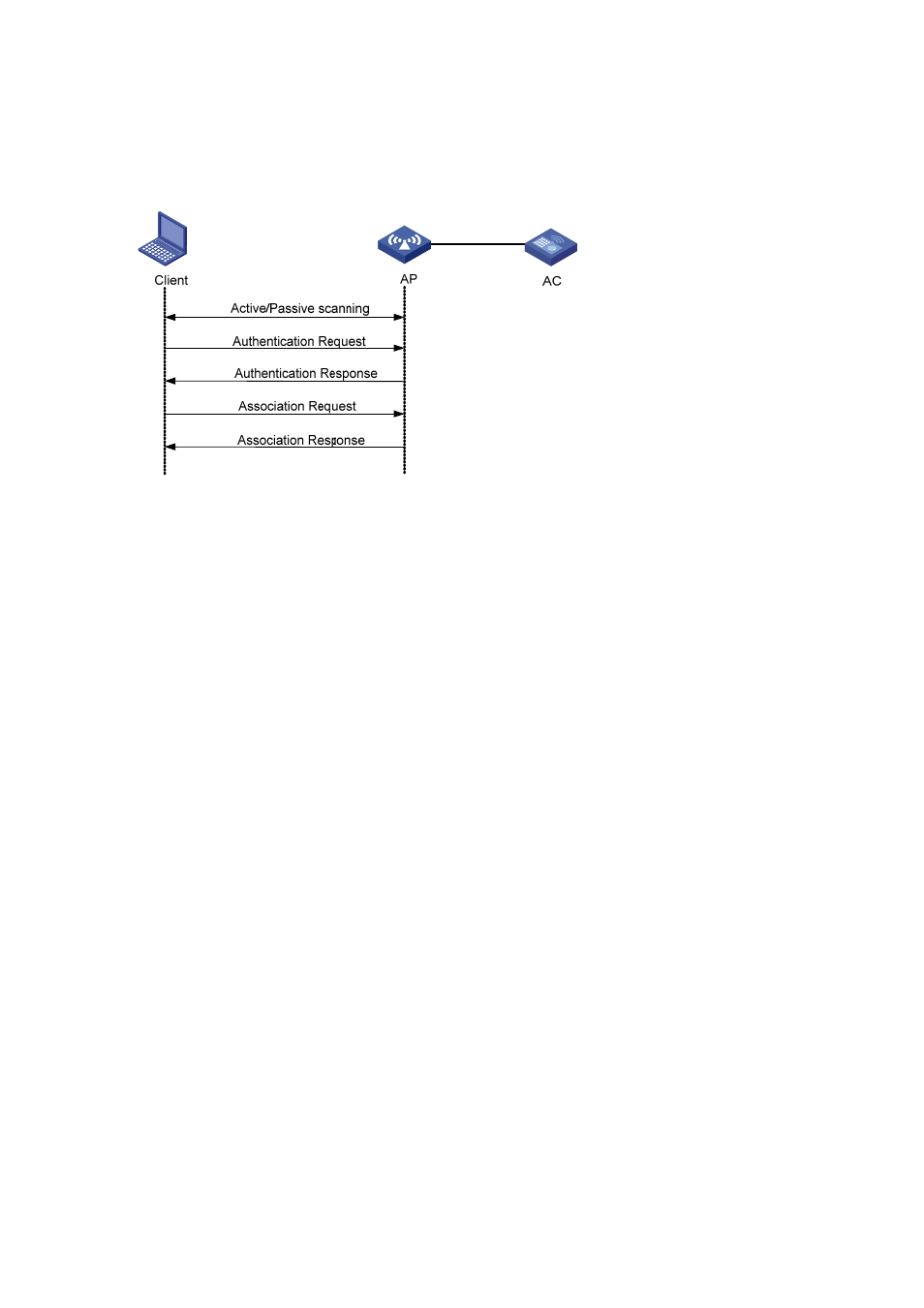Client access, Scanning – H3C Technologies H3C WX6000 Series Access Controllers User Manual
Page 256

31-2
Client Access
A client access process involves three steps: active/passive scanning, authentication and association.
Figure 31-1 Establish a client access
Scanning
A wireless client can get the surrounding wireless network information in two ways, passive scanning or
active scanning. With passive scanning, a wireless client gets wireless network information through
listening to Beacon frames sent by surrounding APs; with active scanning, a wireless client actively
sends a probe request frame during scanning, and gets network signals by received probe response
frames.
Actually, when a wireless client operates, it usually uses both passive scanning and active scanning to
get information about surrounding wireless networks.
1) Active
scanning
When a wireless client operates, it periodically searches for (that is, scans) surrounding wireless
networks. Active scanning falls into two modes according to whether a specified SSID is carried in a
probe request.
A client sends a probe request (with the SSID null, that is, the length of the SSID is 0.): The client
broadcasts a probe request frame on each of the channels supported by the NIC to scan wireless
networks. APs that receive the probe request frame send a probe response frame. The client
associates with the AP with the strongest signal. This active scanning mode enables a client to
know the available wireless services and then access the target wireless network.
